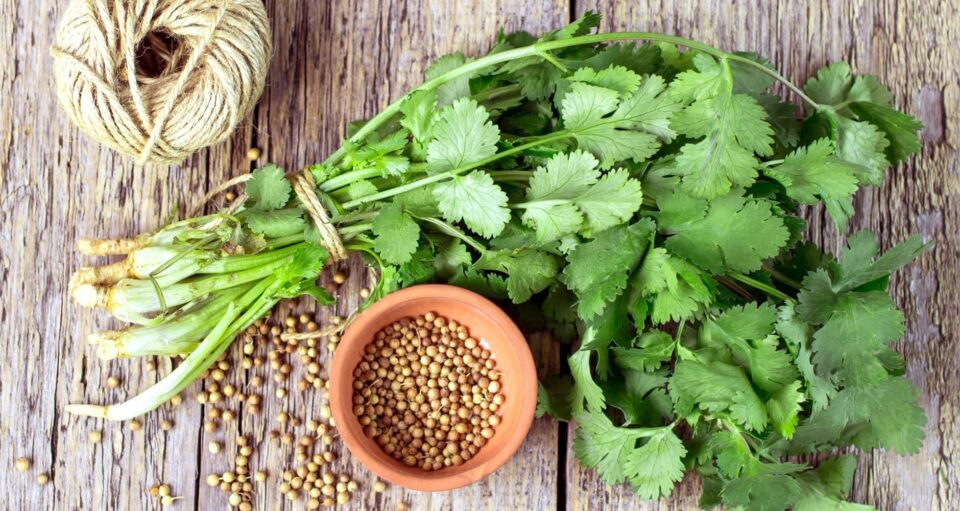Planting coriander seeds at the right time is essential for ensuring healthy growth and a bountiful harvest. Here are some tips for determining the best planting time for coriander in your garden:
- Cool-Season Plant:
- Coriander is a cool-season herb and performs best in temperatures between 50-85°F (10-29°C). It tends to bolt quickly in hot weather, so timing your planting to avoid the peak heat is crucial.
- Early Spring Planting:
- Sow coriander seeds in early spring as soon as the soil can be worked. This is typically 2-3 weeks before the last expected frost date in your area. Early spring planting allows the plants to establish before the weather gets too hot.
- Fall Planting:
- In regions with hot summers, consider planting coriander in the fall. Sow seeds in late summer to early fall, about 6-8 weeks before the first expected frost. This allows the plants to grow in the cooler fall weather, reducing the risk of bolting.
- Succession Planting:
- To ensure a continuous supply of fresh coriander leaves, practice succession planting. Sow seeds every 2-3 weeks throughout the growing season. This way, you’ll have new plants maturing as older ones bolt and go to seed.
- Temperature Monitoring:
- Monitor soil and air temperatures closely. Coriander seeds germinate best at soil temperatures between 55-68°F (13-20°C). Use a soil thermometer to check the temperature before planting.
- Microclimate Considerations:
- Take advantage of microclimates in your garden. Plant coriander in a location that receives morning sun and afternoon shade, especially in warmer climates. This helps keep the plants cooler and prolongs their growing season.
- Indoor Seed Starting:
- In cooler climates, you can start coriander seeds indoors 4-6 weeks before the last frost date. Transplant seedlings outdoors once the risk of frost has passed and the soil has warmed up.
- Soil Preparation Timing:
- Prepare your soil a few weeks before planting. Amend the soil with organic matter and ensure it is well-draining. This gives the soil time to settle and integrate the organic amendments.
- Covering Seeds:
- After sowing the seeds, cover them lightly with soil or compost. Keep the soil moist but not waterlogged. Thin seedlings to the appropriate spacing once they have grown a few inches tall.
- Climate Adaptations:
- If you live in a region with unpredictable weather, consider using row covers or cold frames to protect young coriander plants from unexpected frost or extreme temperature fluctuations.
By following these planting time tips, you can optimize the growing conditions for coriander in your garden, leading to healthier plants and a more productive harvest.
What Are Some Sowing Tips for Coriander Seeds in Your Garden?
Sowing coriander seeds properly is crucial for a successful harvest. Here are some effective tips for sowing coriander seeds when gardening:
- Seed Preparation:
- Coriander seeds are actually two seeds encased in a husk. To improve germination rates, gently crush the seed husks with a rolling pin or your fingers to split them into two. This will help them germinate faster and more uniformly.
- Direct Sowing:
- Coriander has a taproot and doesn’t transplant well, so it’s best to sow seeds directly in the garden where they will grow. If starting indoors, use biodegradable pots to minimize root disturbance when transplanting.
- Soil Temperature:
- Wait until the soil temperature is between 55-68°F (13-20°C) for optimal germination. Use a soil thermometer to ensure the soil is warm enough.
- Planting Depth:
- Sow coriander seeds about 1/4 inch deep. Cover them lightly with soil or compost to ensure they have good soil contact.
- Spacing:
- Space seeds about 6 inches apart in rows, and thin seedlings to 12 inches apart once they are a few inches tall. Proper spacing ensures good air circulation and reduces competition for nutrients.
- Succession Planting:
- Sow seeds every 2-3 weeks for a continuous harvest throughout the growing season. This practice, known as succession planting, ensures you always have fresh leaves available.
- Watering:
- Keep the soil consistently moist but not waterlogged. Water gently to avoid washing away seeds or disturbing young seedlings. Use a fine mist or a gentle setting on your hose.
- Mulching:
- After seedlings emerge, apply a thin layer of mulch around the plants to retain soil moisture, regulate temperature, and suppress weeds. Organic mulches like straw or compost work well.
- Thinning:
- Once the seedlings are a few inches tall, thin them to 12 inches apart. Use the thinned seedlings as microgreens in salads or other dishes.
- Shade in Hot Climates:
- In hotter climates, provide some afternoon shade to prevent the plants from bolting (going to seed) too quickly. Use shade cloths or plant coriander in an area that receives morning sun and afternoon shade.
- Companion Planting:
- Consider companion planting with vegetables like tomatoes, spinach, or carrots. Coriander can help repel pests such as aphids and spider mites, benefiting nearby plants.
- Avoid Overcrowding:
- Avoid sowing seeds too densely, as overcrowding can lead to poor air circulation and increased risk of diseases. Proper spacing is crucial for healthy growth.
By following these sowing tips, you can create optimal conditions for your coriander seeds to germinate and grow, leading to a robust and productive garden.
What Is a Main Health Benefit of Coriander Seeds in Recipes?
Anti-Inflammatory Effects
- Reduces Inflammation: Coriander seeds contain antioxidants like quercetin and linalool, which have anti-inflammatory properties. These compounds help reduce inflammation and may provide relief from conditions like arthritis and other inflammatory diseases.
Antimicrobial Properties: Coriander seeds have antimicrobial properties that may help combat bacterial infections and support a healthy immune system.

